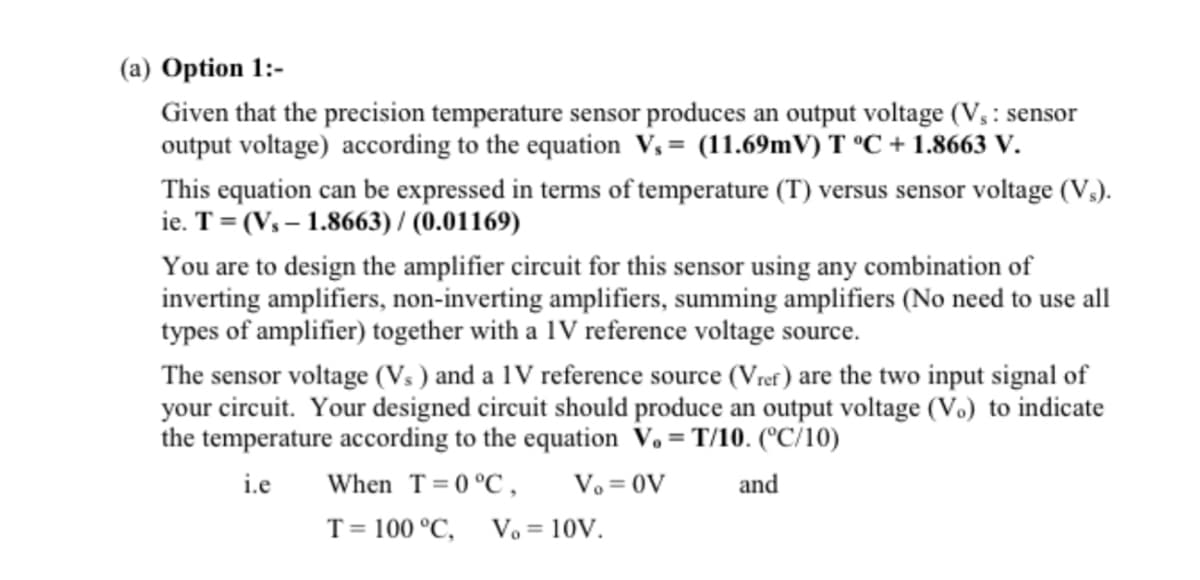(a) Option 1:- Given that the precision temperature sensor produces an output voltage (V, : sensor output voltage) according to the equation V₁= (11.69mV) T °C +1.8663 V. This equation can be expressed in terms of temperature (T) versus sensor voltage (V₂). ie. T = (V₁-1.8663)/(0.01169) You are to design the amplifier circuit for this sensor using any combination of inverting amplifiers, non-inverting amplifiers, summing amplifiers (No need to use all types of amplifier) together with a 1V reference voltage source. The sensor voltage (Vs) and a 1V reference source (Vref) are the two input signal of your circuit. Your designed circuit should produce an output voltage (V.) to indicate the temperature according to the equation V.=T/10. (°C/10) i.e When T=0°C, Vo = OV T = 100 °C, Vo = 10V. and
Power Amplifier
The power amplifier is an electronic amplifier designed to maximize the signal strength of a given input. The input signal strength is enhanced to a high enough level to drive output devices such as speakers, headphones, RF (Radio frequency) transmitters, etc. Unlike voltage / current amplifiers, the power amplifier is designed to drive core loads directly and is used as a storage block in the amplifier series.
Maximum Efficiency Criterion
In every field of engineering, there is a tremendous use of the machine and all those machines are equipped for their popular work efficiency so it very much important for operation engineers to monitor the efficiency of the machine, planning engineers to check out the efficiency of the machine before installing the machine and design engineers to design machine for higher efficiency than and then the utility will procure their products that will ultimately lead to profit and loss of the company. It indicates the importance of efficiency right from the initial stage as manufacturing units, intermediate stage as planning coordinators, and end-users stage as a utility.

Trending now
This is a popular solution!
Step by step
Solved in 3 steps with 1 images

VSF=11.69×10-9×100+1.8663=3.0353 V
how come need to times 10^9?








